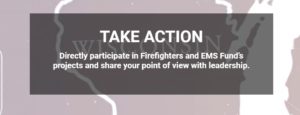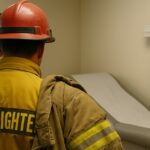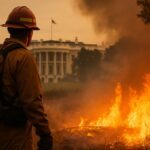Overview
2021 has flown by. Many of us wanted a return to normalcy so badly that we became distracted by the renewed quality of our American lives and for a moment, we ceased paying attention to our already cracking infrastructure. For years American fire departments, from dense metropolitan areas to rural incorporations, have been struggling to keep up with a variety of challenges: politicization of public safety, retention issues, rising inflation, and increasing demands of the job.
Long ago, the fire service began with personal initiative. Members of our communities with something to give, stepped up to serve others because they possessed a little more. It should be well understood in America, the most charitable nation on earth, that the reason for having access to more than what one needs, is the charge of sharing it with others. If you have vigor, strength, love to give- then be of service to your fellows. Since those seemingly primitive days however, we have sought to compensate our heroes a little better.

Notwithstanding that progress, this field has evolved to become more technical than ever before. Processes have been established to improve patient outcomes, prolong the life of equipment, and understand better the invisible beast lurking behind each and every medical or fire call. Countless regulations have been put in place to prevent environmental harm and improve the efficacy of products that are used by first responders. Companies have developed new and better tools to accomplish the jobs for which they were intended; and billions have been spent on research to understand both the psychological and physiological impacts of responding first. The conclusion of all these efforts? Firefighters not only needed better equipment to protect themselves and their patients from harm, they needed better training too. The length of the average training academy in the United States has gone from 55-hours before getting on the job in the 1980’s, to 585+ hours today. That’s 585 hours of lessons that you aren’t supposed to simply forget once you’ve passed the test. That’s 585 hours of new skills, considerations, and techniques for the sake of protecting human life, which then after the academy must be retained and executed at a high standard to the constant beat of a 24-hour shift.
In many places, Americans are supporting their local emergency services without hesitation…but in others, too many folks exist who just don’t know. They don’t know what the job entails, or what it costs each of those who perform it; and that is where Firefighters and EMS Fund comes into the picture. We exist to increase awareness of the issues affecting Fire and EMS Professionals so that communities can become and remain acquainted with the struggles and costs resulting from lack of funding and prioritization from elected officials. We help concerned citizens, local committees, and fire departments promote ballot measures and fight to defeat legislation that is harmful to the first responder community by engaging voters and motivating them to take action. In 2021, Firefighters and EMS Fund launched and maintained initiatives that help to accomplish these goals:
- 2020 Referendum Report
- Citizen Advisory Committee
- Budget Cuts Tracking
- Presumptive Cancer Research Project
- Legislative Action Page
- Firefighters Support Alliance Project
2020 Referendum Report
This report compiles data from as far back as 2017 to identify correlations between successful ballot measures and those that failed. This report can be used as a general guide to inform when might be the best time of year to launch a ballot measure, which social media platforms the most successful ballot measures utilized, what language successful ballot measures utilized that was also absent in those that failed, and how much lead time to become acquainted with a measure people have historically needed to feel comfortable with voting to increase their taxes.
Citizen Advisory Committee
This initiative seeks to increase the degree of input Firefighters and EMS Fund’s supporters have when deciding where to become engaged. Citizens on this committee have no formal obligation to participate, but are free to attend meetings with the Executive Director and share their thoughts. They can also obtain updates on the projects the organization is publicly engaged in and receive tips on how they can contribute to a project’s success.
Presumptive Cancer Research Project
This project seeks to inform citizens of how their state has responded to the cancer epidemic in the fire service. It outlines what forms of cancer are covered as occupational hazards, and voters are free to advocate for where improvements can be made. This project is separate from the advocacy that Firefighters and EMS Fund continues to engage in for the sake of increasing presumptive cancer benefits nationwide.
Budget Cuts Tracking and Legislative Action Page
Two new pages were compiled to empower voters with the information they need to support issues in their state that need citizen involvement. They are encouraged here to reach out to their representatives and organize groups in their communities to defeat or support an issue for the benefit of local first responders.
Firefighters Support Alliance Project
Whereas Firefighters and EMS Fund exists to increase awareness of ballot measures and interfaces with citizens and local fire and EMS professionals for the sake of supporting a ballot measure in a community, the Firefighters Support Alliance was formed to specifically increase awareness of the serious health issues first responders are facing. Cardiovascular, behavioral, and cancer risks are all extremely complex and costly issues that need special attention given to them if progress is to be made on this front.
Looking Ahead
Next year, Firefighters and EMS Fund will continue to update the projects we have already begun and take advantage of 2022 being a major election year. Many agencies have had the opportunity to better understand the financial impacts of the COVID-19 pandemic, and strategize how budget shortfalls will need to be accounted for. It is also a year that many local elected officials are up for reelection, and these changes will significantly impact local Fire and EMS response capabilities. Firefighters and EMS Fund stands ready to be of help wherever we are needed.











